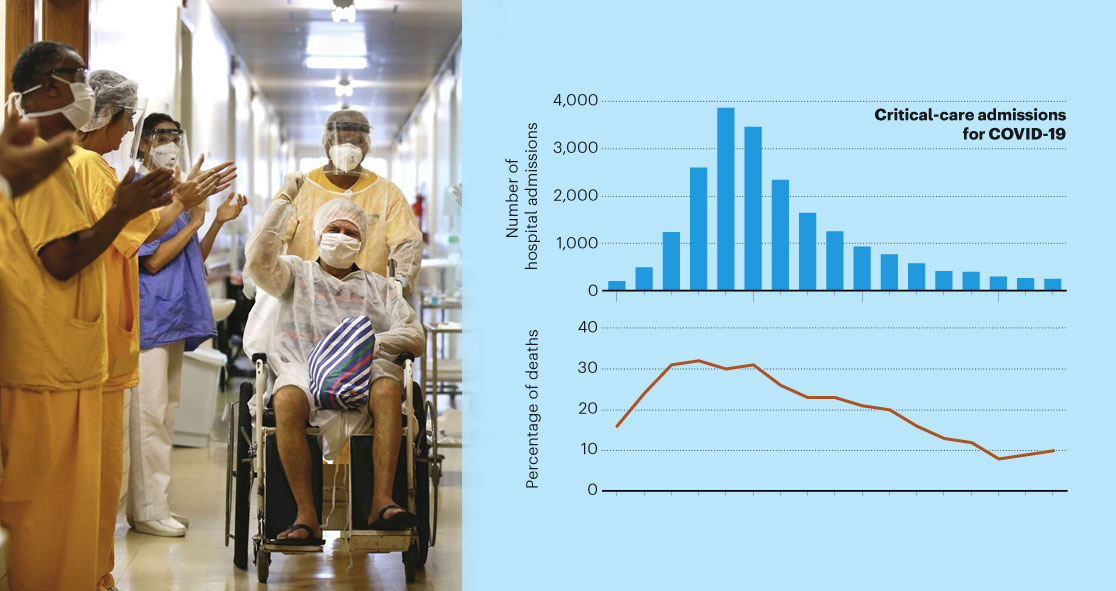Researchers of the Institute for Health Metrics and Evaluation at the University of Washington have published a new, comprehensive study of COVID-19 hospital mortality in the United States.
The study, published Monday in JAMA Network Open, is probably the most comprehensive one to look at changes in hospital-related COVID-19 deaths during the pandemic.
Between March 2020 and November 2020, the researchers looked at more than 20,000 COVID-19 patients who were hospitalized. They discovered the rates in hospital mortality among COVID patients fell 38% from March 2020 to May 2020, and it declined further through November 2020.
The team aimed to understand the most likely cause of the observed trend by considering patients’ age, sex, comorbidities, and severity of the disease when the patient was hospitalized. However, none of these factors fully explained the decline in death rates, according to the researchers.
The study’s lead author Dr. Gregory Roth said, “Understanding why mortality rates changed is important for clinicians working to improve outcomes for patients hospitalized with COVID-19.”
“Further analysis is needed to understand the drivers more precisely, but it speaks to a crucial need for information sharing and identifying hospital best practices that can prevent mortality rates from increasing again, particularly during possible future waves of COVID-19 infections,” he added.
The investigators looked at the records from the COVID-19 Cardiovascular Disease (CVD) Registry of the American Heart Association (AHA), including more than 100 hospitals in 31 states.
Death rates for COVID-19 patients in the registry were 19.1% in March and April, 11.9% in May and June, 11% in July and August, and 10.8% from September through November, according to Medical Xpress.
One-third of patients were admitted to ICU, while at least 1 in 5 were placed on mechanical ventilation.
Dr. Roth explained, “Our findings suggest that the decline in mortality could be due to overloaded hospitals and changes in treatment. With more variants circulating and many countries still struggling with overloaded hospitals and scarce resources, the more we know about this the better.”
The AHA’s COVID-19 CVD registry was introduced shortly after the pandemic started last year so it can provide insights to care and adverse cardiovascular outcomes.
Dr. James de Lemos, the co-chair of the steering committee for the registry, said, “The findings such as the ones from this study reflect the importance and value of collecting this rapidly growing dataset to conduct multiple analyses and research projects in a much shorter period of time.” The article was published online on Medical Xpress.























